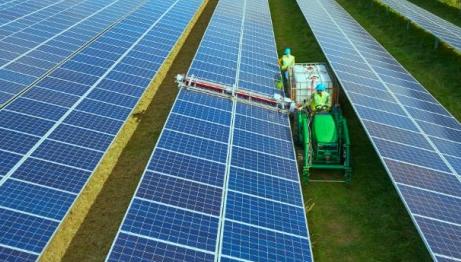Global Energy Storage to Bounce Back Despite Adversity
By :
Notice: Trying to get property 'fName' of non-object in /home/u589520015/domains/observerdawn.com/public_html/module/Application/view/application/index/news.phtml on line 23
Notice: Trying to get property 'lName' of non-object in /home/u589520015/domains/observerdawn.com/public_html/module/Application/view/application/index/news.phtml on line 23

The
medium term future for energy storage remains bright despite coronavirus
pandemic. The recent analysis by Frost & Sullivan, Outlook for the Global
Energy Storage Industry, 2020, predicts the market to decline, as project
delays, including the lack of access to residential and commercial clients,
takes its toll.
An additional insight, Global Battery
Energy Storage Market, analyzes the impact of the pandemic and notes the market
is forecast to rebound strongly in 2021 and experience an accelerated growth
period from 2022 onwards, with global annual capacity additions forecast to hit
23.3 GW per year in 2025, up from just 4.1GW in 2019. Jonathan Robinson, Energy
Program Lead, Industrial at Frost & Sullivan said, “The fundamentals behind
an investment in energy storage remain strong”.
The United States and China are set to be
the biggest markets for energy storage in terms of installations and installed
capacity. South Korea, which was the global leader in energy storage solutions
in 2018, is likely to drop a few positions but remain one of the top five along
with Germany and Japan. High electricity prices, declining feed in tariffs,
increasing grid demand charges and declining technology and project costs all
mean that energy storage is becoming a much more attractive proposition for
consumers from households to heavy industry.
There will be a growing market for
retrofitting existing solar PV systems with additional energy storage capacity,
while new solar PV installations will increasingly be paired with a storage
system at the time of purchase. Leveraging big data analytics will enable
utilities to determine likely demand in a particular locality and deal with
fluctuating customer loads.
Battery manufacturers must forge
partnerships with energy management solution providers to offer in-built,
cloud-based battery monitoring and fault diagnosis platforms with relevant
cyber security measures to continuously monitor and optimize the performance of
a large pool of batteries. Battery manufacturers must incorporate machine
learning algorithms to develop smart self-learning system. Companies should
either develop or partner with the providers of virtual power plant solutions,
as these will become increasingly important in the decentralized energy markets
of the future.
Outlook for the Global Energy Storage
Industry, 2020 and Global Battery Energy Storage Market are a part of Frost
& Sullivan's Energy and Environment Growth Partnership Service program,
which helps organizations identify a continuous flow of growth opportunities to
succeed in an unpredictable future.
